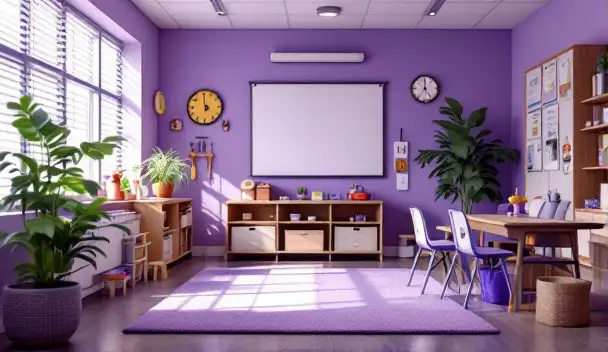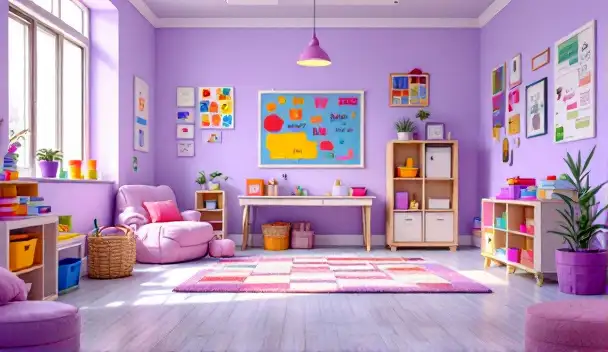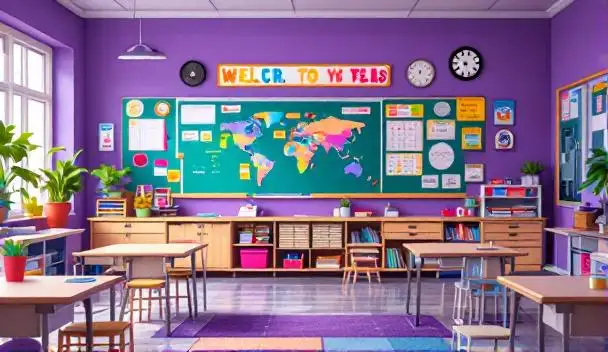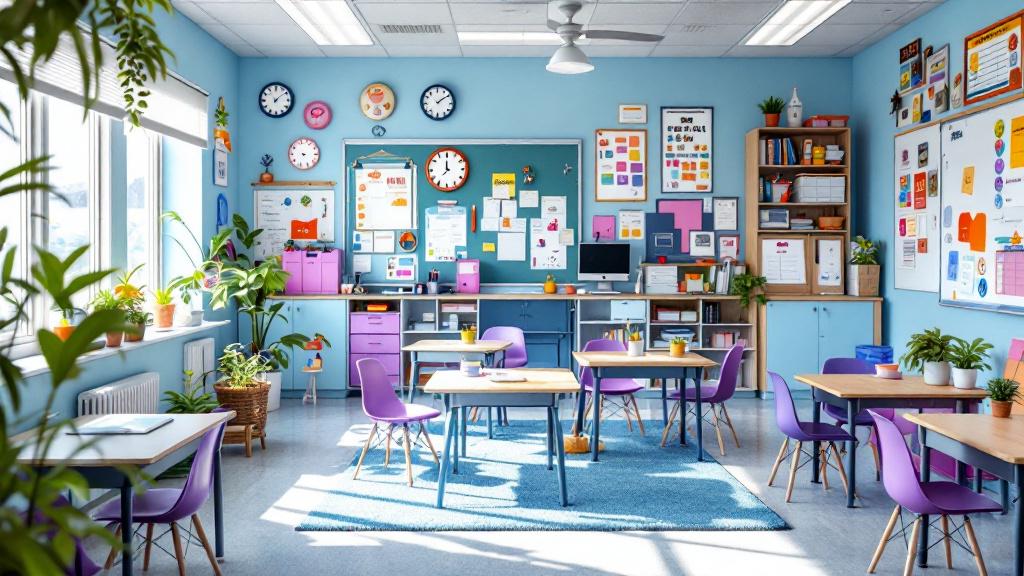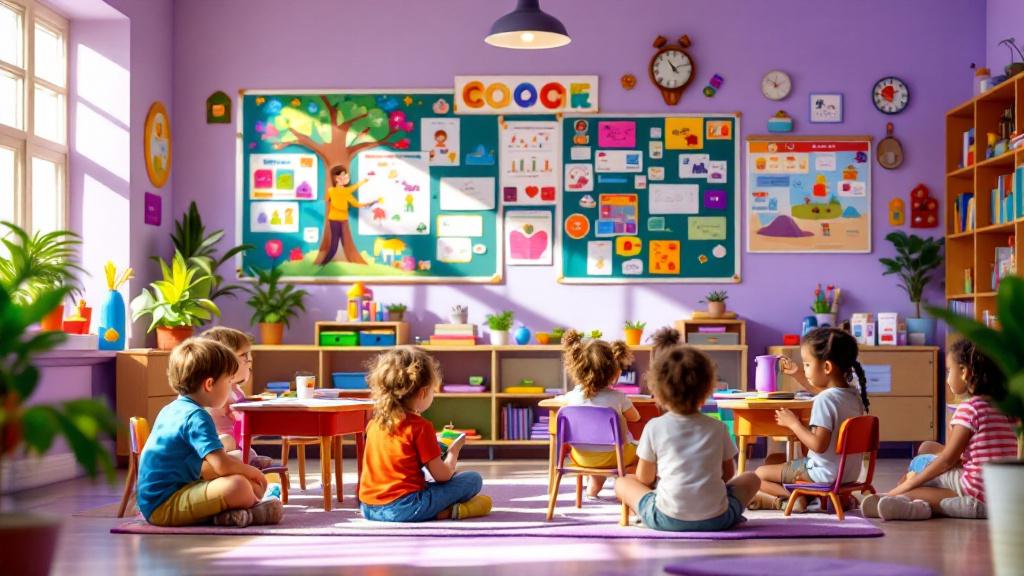Enhancing Digital Education through ABA Therapy
Virtual learning presents unique challenges, especially for children with autism who require specialized support to maintain attention and engagement. Applied Behavior Analysis (ABA) therapy has emerged as an effective method to address these challenges, offering personalized interventions that enhance focus and engagement during online learning sessions. This article explores how ABA therapy strategies, including innovative methods like virtual reality (VR), can be leveraged to improve educational outcomes in digital environments.
Understanding the Role of ABA Therapy in Virtual Learning

What is Applied Behavior Analysis (ABA) and how does it help people with autism?
Applied Behavior Analysis (ABA) is an evidence-based treatment recognized for its effectiveness in helping children with autism spectrum disorder (ASD). This method involves individualized assessments by trained behavior analysts, focusing on enhancing communication, social skills, and overall quality of life.
ABA therapy is built on the principle of positive reinforcement, which encourages the repetition of desired behaviors. This approach is particularly beneficial in virtual learning environments, as it helps maintain engagement. By promoting skills such as attention and focus, ABA creates a structured yet flexible learning atmosphere that is tailored to meet each child's specific needs.
How does ABA assist children in virtual settings?
In the context of virtual learning, ABA therapy uses strategies such as breaking down complex activities into manageable steps. This ensures that each child can progress at their own pace, enhancing their attention and engagement during lessons. Additionally, ongoing assessments and data collection allow therapists to fine-tune their strategies, ensuring they remain effective and responsive to the child's evolving needs.
Moreover, digital tools create sensory-friendly environments that reduce potential overload, a critical factor for children with autism. This digital framework supports the establishment of routines similar to those in traditional classrooms, utilizing visual aids and hands-on activities to engage different learning styles effectively.
What are the evidence-based benefits of ABA?
Evidence suggests that ABA therapy significantly improves social skills, academic performance, and cooperation among peers. A study led by Dr. Ashley Fuhrman from BlueSprig highlights the effectiveness of integrating virtual reality (VR) into therapy, which not only boosts engagement but also aids in skill retention in a low-anxiety setting.
The collaborative aspects of digital learning platforms encourage social skill development through virtual interactions, providing children with valuable opportunities to practice communication and other essential skills. Overall, ABA therapy brings a wealth of strategies that enhance learning and engagement for children with autism in virtual environments, making it a vital resource in their educational journey.
Effectiveness of ABA Techniques in Virtual Environments

How does ABA therapy improve attention and engagement during virtual learning?
Numerous studies have shown that ABA therapy can significantly enhance attention and engagement, particularly in virtual learning contexts. Techniques such as positive reinforcement encourage the repetition of desired behaviors, fostering sustained attention in online settings. For instance, when children successfully complete tasks, they receive positive feedback, which motivates further participation.
ABA therapy also employs structured setups that create predictability, crucial in reducing anxiety. This approach makes virtual learning more accessible for children with autism. By breaking complex tasks into manageable components, therapists tailor interventions—allowing students to digest material at their own pace.
Adaptation of ABA methods for virtual settings
Flexibility is a key advantage of ABA in virtual environments. Personalized learning strategies can easily integrate into digital platforms, ensuring effective engagement. Visual aids, along with sensory-friendly digital tools, cater to various learning styles and minimize sensory overload.
Ongoing assessment and data collection are vital for staying adaptable in this fast-evolving learning landscape. By regularly evaluating a student’s progress, adjustments can be made to maintain engagement levels. Programs like Floreo utilize virtual reality, recreating scenarios that help practice social skills in a less pressured environment, ultimately benefiting attention and collaboration during virtual lessons.
| Technique | Description | Benefit in Virtual Learning |
|---|---|---|
| Positive Reinforcement | Encourages desired behaviors through rewards | Maintains motivation and task completion |
| Structured Environment | Predictability and routine | Reduces anxiety and enhances focus |
| Visual Aids | Supports various learning styles | Improves understanding and engagement |
| Ongoing Assessment | Continuous feedback and adjustments | Ensures strategies align with individual needs |
| VR Simulations | Real-world practice in a controlled scenario | Reduces pressure and enriches engagement and retention |
Benefits and Challenges of Virtual ABA Therapy

Advantages of virtual ABA therapy
Virtual ABA therapy offers numerous benefits. One major advantage is the ability to customize interventions to meet individual needs, significantly enhancing focus and engagement during learning activities. In this flexible virtual setting, children can learn at their own pace, promoting sustained attention.
Positive reinforcement, a core principle of ABA, further increases student motivation. Digital platforms enable educators to implement reward systems that can motivate children to complete tasks effectively. Moreover, using virtual reality (VR) tools such as the Floreo platform allows children to practice social and communication skills in engaging, anxiety-free environments, leading to improved learning outcomes.
Challenges faced by families and educators
Despite its advantages, virtual ABA therapy does face certain challenges. One significant limitation is the reduced in-person interaction. This lack of direct engagement can hinder the overall effectiveness of teaching and learning. Additionally, both parents and educators must equip themselves with reliable technology and adequate training in ABA strategies to maximize the benefits of virtual education.
Furthermore, the effectiveness of ABA interventions is closely tied to ongoing assessment and data collection, which can be complex in a remote setup. Ensuring tailored support while managing the technology can be challenging for families.
Research resources supporting virtual ABA
Research supporting the implementation of virtual ABA strategies is accessible through various scholarly databases. Resources like APA PsycInfo offer a wealth of peer-reviewed literature on behavioral analysis in educational contexts. Additionally, databases such as ERIC and Scopus provide avenues for exploring relevant studies that can help educators refine their methods in remote learning environments. The evidence backing these strategies is critical for optimizing learning experiences for children with autism.
Innovative Approaches: The Role of VR in ABA Therapy

What innovative approaches, including virtual reality, are used to enhance ABA therapy during online learning?
Innovative approaches to enhance ABA therapy during online learning include the integration of virtual reality (VR) tools. Recent research led by experts at BlueSprig emphasizes the positive impact of these VR platforms, such as Floreo. These tools create simulated environments where children with autism can safely practice essential social and communication skills.
Studies indicate that participation in VR therapy results in substantial improvements in cognitive abilities and social interactions. For instance, the effectiveness of skill retention is notably high, showcasing a large effect size among participants. Moreover, VR technology allows for tailored experiences that meet each child’s unique needs, adapting scenarios and sensory stimuli to further optimize learning outcomes.
The structured and predictable nature of VR environments helps in reducing anxiety and sensory overload, which are common challenges for children with autism. Engaging in virtual scenarios allows for repeated practice without the real-world pressures, thus enhancing the therapy experience.
Additionally, children enjoy participating in VR simulations, which plays a crucial role in boosting their motivation and engagement during therapy sessions. This increased engagement ultimately leads to better learning outcomes and fosters a more stimulating learning environment.
In summary, the incorporation of VR in ABA therapy not only makes the sessions more engaging but also significantly enhances the efficacy of traditional rehabilitation methods. It promotes improved behavioral and cognitive development, creating a comprehensive approach to learning for children with autism.
Practical Tips for Parents: Using ABA Methods at Home

Guidance for Parents on Applying ABA Strategies
For parents looking to enhance their children's learning experience at home, applying ABA strategies can be incredibly beneficial. One effective method is to establish a structured routine that mirrors the predictability often found in therapy sessions. This provides a sense of security for children, particularly those with autism, helping them focus better during virtual learning.
Also, remember to break down tasks into manageable components. Simplifying complex skills into smaller steps makes it easier for children to grasp concepts, ultimately improving their attention and engagement.
Tools and Techniques for Boosting Engagement in Virtual Learning
Utilizing digital tools can significantly enhance the virtual learning experience. Employ visual aids and hands-on activities that cater to diverse learning styles, keeping lessons energetic and engaging. Using positive reinforcement techniques, such as reward systems for completed tasks, can motivate children and encourage consistent participation.
Additionally, consider leveraging emerging technologies like virtual reality (VR). VR platforms, specifically designed for neurodiverse learners, create immersive environments that reduce anxiety and enhance focus by simulating real-world scenarios. For instance, platforms like Floreo can help children practice social skills in a game-like, low-pressure setting.
By tailoring these ABA methods to meet individual needs, parents can foster a supportive and effective virtual learning environment.
Research-Backed Strategies for Enhancing Engagement
Importance of Ongoing Assessments and Data in ABA
Ongoing assessments are vital in ABA therapy, especially in virtual learning environments. They allow therapists to continuously evaluate each child's progress and adjust strategies accordingly. Data collection provides insights into what works best for individual learners, ensuring that engagement techniques are effectively tailored to their needs.
This method of continuous feedback not only supports sustained attention but significantly enhances learning experiences. By regularly analyzing data, therapists can identify patterns, adapt interventions, and maintain high levels of motivation among students.
Tailored Interventions for Virtual Learning
Tailoring interventions to meet the individual needs of children is a cornerstone of effective ABA therapy. In virtual learning settings, this adaptability becomes even more crucial. ABA therapists can break down complex skills into manageable components, enhancing focus and attention.
Furthermore, integrating diversified teaching methods—such as using visual aids and hands-on activities—aligns with various learning styles, making lessons more engaging. Establishing clear expectations and consistent routines also plays a critical role in minimizing disruptions and fostering an effective learning environment.
Overall, personalized learning plans that leverage digital platforms maximize the potential for success, helping children with autism thrive in their educational pursuits.
Social Skills Development through Digital Learning
Role of ABA in Developing Social Skills Virtually
ABA therapy is instrumental in enhancing social skills for children with autism, particularly when adapted for virtual learning. By focusing on behavior modification through positive reinforcement, therapists encourage desirable behaviors, which include improved social interactions. Virtual environments serve as practical platforms for lessons on cooperation, conflict resolution, and effective communication, all tailored to individual learning styles.
The use of technology, such as the VR platform Floreo, provides scenarios where children can practice social skills in a safe, controlled setting. This decreases anxiety and allows for engagement without the pressures of real-world social situations. As children navigate these simulated experiences, they gain confidence and retain skills that translate into real-life applications.
Impact of Virtual Learning on Social Interactions Among Children with Autism
Virtual learning has transformed how children develop social skills. Unlike traditional settings, digital platforms can offer diverse tools for collaboration, such as online group projects or interactive games, fostering peer interactions. These digital avenues not only enhance communication but also allow for immediate feedback and recognition, vital for student motivation.
Establishing consistent routines and employing visual aids in digital formats can further promote engagement and focus during learning. By creating sensory-friendly environments, virtual learning accommodates the unique needs of children with autism, allowing them to thrive socially and academically while building essential interpersonal skills.
The Future of Virtual Learning and ABA Therapy
As the digital learning landscape continues to evolve, ABA therapy stands out as a pivotal tool for enhancing education, particularly for children with autism. By integrating evidence-based strategies and innovative technologies like virtual reality, ABA can significantly improve attention and engagement, paving the way for better learning outcomes. As educators and parents continue to collaborate in these efforts, the potential for positive impact in virtual education remains high, promising a future where all children have the opportunity to thrive.
References
- Applied Behavior Analysis (ABA) | Autism Speaks
- Research Shows VR Is An Effective Tool For ABA Therapy
- School-Based ABA Therapy: Boosting Learning and Behavior
- How ABA Therapy Can Support Digital Learning for Kids With Autism
- 4 Benefits of ABA Therapy for Children with Autism
- The Incredible Benefits of Early Intervention for Children With Autism
- Virtual ABA Therapy Services - Bluesprig Autism





































